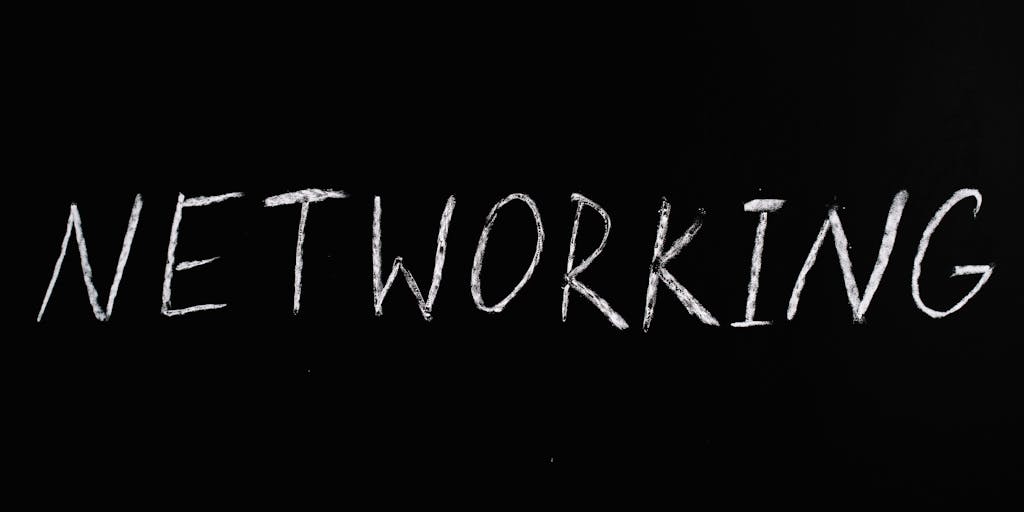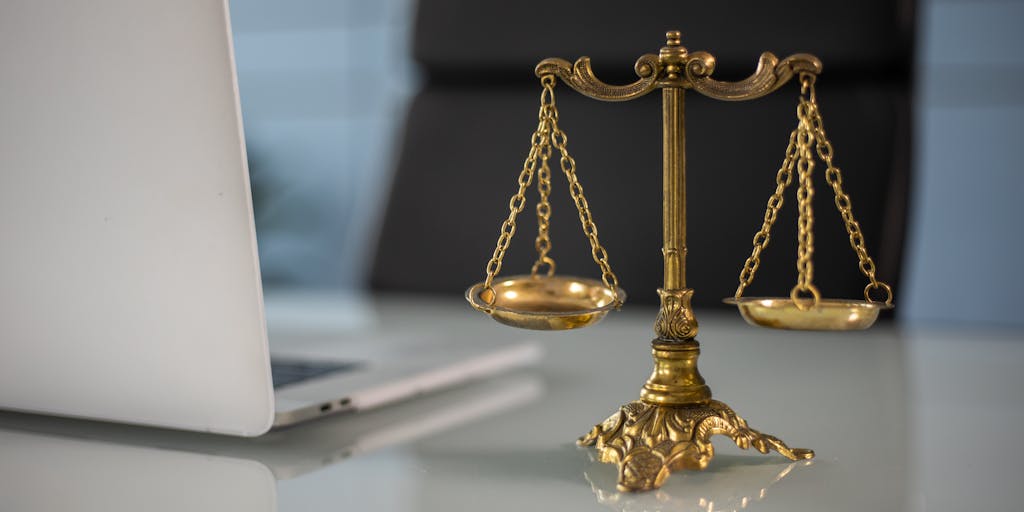When navigating the complexities of child support, one of the most pressing questions many parents have is, “How long will it take to receive child support?” The timeline can vary significantly based on several factors, including the jurisdiction, the specific circumstances of the case, and the responsiveness of both parents. Understanding the child support process can help set realistic expectations and reduce anxiety during this challenging time.
Understanding the Child Support Process

The child support process can feel overwhelming, especially if you’re unfamiliar with the legal system. It typically involves several steps, each with its own timeline. By breaking it down, we can better understand what to expect and how to prepare. Let’s explore the first step in detail.
STEP 1: FILING FOR CHILD SUPPORT (2 TO 4 WEEKS)
The journey begins with filing for child support, which can take anywhere from two to four weeks. This initial step is crucial as it sets the foundation for the entire process. You’ll need to gather necessary documentation, such as income statements and proof of expenses related to the child. This can feel daunting, but remember, you’re not alone. Many resources are available to help you through this.
Once you’ve filed your application, the court will typically schedule a hearing. This hearing is where both parents can present their cases, and it’s essential to be prepared. You might wonder, “What if the other parent doesn’t respond?” In many jurisdictions, if the other parent fails to respond, the court may still proceed with the hearing, which could expedite the process.
For more detailed information on the forms and procedures involved, you can check out the Illinois Child Support Forms. Additionally, if you have questions about the process, the FAQs section on the Illinois Department of Human Services website can be a valuable resource.
As you navigate this step, it’s important to keep in mind that the timeline can be affected by various factors, such as the complexity of your case or the court’s schedule. Patience is key, but so is being proactive. If you feel stuck, consider reaching out to a legal professional who specializes in family law. They can provide guidance tailored to your situation and help you move forward.
STEP 2: COURT PROCEEDINGS AND ESTABLISHING AN ORDER (1 TO 6 MONTHS)
Once you’ve initiated the child support process, the next step involves court proceedings to establish a formal order. This phase can be quite variable, typically taking anywhere from one to six months. You might wonder, why such a range? Well, it largely depends on your local court’s schedule, the complexity of your case, and whether both parents are in agreement.
During this time, the court will consider various factors, including each parent’s income, the needs of the child, and any existing custody arrangements. If both parents can reach an agreement outside of court, this can significantly speed up the process. However, if disputes arise, it may lead to additional hearings and delays.
For instance, if you’re in a situation where both parents are cooperative, you might find that the process is relatively smooth. On the other hand, if there are disagreements about income or custody, the court may need to conduct further investigations, which can extend the timeline. For more insights on this process, you can check out this resource.
STEP 3: PAYMENT PROCESSING AND ENFORCEMENT (4 TO 8 WEEKS)
After the court has established a child support order, the next step is payment processing and enforcement, which typically takes about four to eight weeks. This phase is crucial because it ensures that the financial support is delivered as intended. You might be asking, what happens during this time?
Once the order is in place, the child support agency will begin processing payments. This can involve setting up automatic deductions from the paying parent’s paycheck or establishing a payment plan. If the paying parent fails to comply, the agency has various enforcement mechanisms at its disposal, such as wage garnishment or even legal penalties.
It’s important to stay informed during this period. If you have questions about how payments are processed or what to do if payments are late, resources like this FAQ page can provide valuable information.
STEP 4: RECEIVING PAYMENTS
Finally, we arrive at the moment you’ve been waiting for: receiving payments. Once everything is set up, you should start receiving child support payments according to the schedule outlined in the court order. However, it’s essential to understand that the timing of these payments can vary based on several factors.
For example, if the paying parent is consistent with their payments, you can expect to receive them on time. However, if there are issues such as job loss or disputes, it may lead to delays. In some cases, parents may also be responsible for back pay, which can complicate matters further. If you’re curious about how long it typically takes to receive back pay, you might find answers in discussions like those on Quora.
In summary, while the process of establishing and receiving child support can seem daunting, understanding each step can help you navigate it more effectively. If you’re looking for more information on related topics, consider exploring articles on best YouTube marketing agencies or best digital marketing podcasts to broaden your knowledge base.
When navigating the complexities of child support, one of the most pressing questions parents often have is, “How long will it take to receive child support?” The timeline can vary significantly based on several factors, and understanding these can help set realistic expectations. Let’s dive into the elements that can influence the duration of the child support process.
Factors That Can Delay Child Support

Child support is designed to ensure that children receive the financial support they need from both parents. However, various factors can delay the establishment and payment of child support. Here are some key elements to consider:
- Legal Proceedings: If there are disputes regarding custody or paternity, the legal process can become lengthy. Court hearings may be required to resolve these issues before child support can be established.
- Incomplete Documentation: Delays often occur when either parent fails to provide necessary financial documents. This can include income statements, tax returns, or proof of expenses related to the child.
- State Variations: Each state has its own laws and procedures regarding child support. For instance, in some states, the process may be streamlined, while in others, it can be more cumbersome. For detailed insights on timelines specific to your area, you might find this resource helpful: How Long Does It Take to Get Child Support in Arlington Heights, IL.
- Noncompliance: If the non-custodial parent is uncooperative or difficult to locate, this can significantly delay the process. Enforcement actions may be necessary, which can take additional time.
- Changes in Circumstances: If either parent experiences a change in income or employment status, this can lead to modifications in the child support order, further complicating and extending the timeline.
Understanding these factors can help you anticipate potential delays and prepare accordingly. Have you experienced any of these challenges in your own situation?
Expediting the Child Support Process

While delays can be frustrating, there are steps you can take to expedite the child support process. Here are some strategies that may help:
- Gather Documentation Early: Ensure that you have all necessary documents ready before filing for child support. This includes proof of income, expenses, and any relevant financial information.
- Seek Legal Assistance: Consulting with a family law attorney can provide clarity and guidance through the process. They can help you navigate the legal system more efficiently and ensure that all paperwork is correctly filed.
- Utilize Mediation: If both parents are willing, mediation can be a faster alternative to court. It allows for a more collaborative approach to resolving disputes and can lead to quicker agreements.
- Stay Informed: Keeping up with your state’s child support guidelines and processes can help you understand what to expect and how to avoid common pitfalls. Resources like Illinois State Disbursement Unit can provide valuable information.
- Communicate Openly: Maintaining open lines of communication with the other parent can help resolve issues more quickly. If both parties are cooperative, the process can move along much smoother.
By taking proactive steps, you can help ensure that child support is established in a timely manner. Have you considered any of these strategies in your own situation?
Conclusion: How Long Does It Take to Get Child Support?

In conclusion, the timeline for receiving child support can vary widely based on numerous factors, including legal proceedings, documentation, and state-specific regulations. While it can take anywhere from a few weeks to several months, understanding the potential delays and actively working to expedite the process can make a significant difference. If you’re looking for a visual overview of the child support process, you might find this video helpful: Child Support Process Overview.
Ultimately, staying informed and prepared can help you navigate this challenging journey. Remember, you’re not alone in this process, and there are resources available to support you every step of the way. If you have further questions or need assistance, don’t hesitate to reach out to professionals who can guide you through the intricacies of child support.
What is the Division of Child Support Services?
When navigating the complexities of child support, understanding the role of the Division of Child Support Services (DCSS) is crucial. The DCSS is a government agency that helps ensure that children receive the financial support they need from both parents. This agency plays a pivotal role in establishing, enforcing, and modifying child support orders, making it a vital resource for custodial parents.
Imagine a scenario where a parent is struggling to make ends meet after a separation. The DCSS steps in to provide assistance, ensuring that the non-custodial parent contributes to the child’s upbringing. They do this through various means, including locating absent parents, establishing paternity, and collecting payments. The DCSS aims to create a fair system that prioritizes the child’s welfare, which is something we can all agree is essential.
Who can get help from DCSS?
Are you wondering if you qualify for assistance from the DCSS? The good news is that the services are available to a wide range of individuals. Typically, custodial parents—those who have primary custody of the child—can seek help from the DCSS. However, non-custodial parents can also benefit from their services, especially when it comes to understanding their obligations and rights.
In many cases, the DCSS can assist:
- Single parents looking to establish or modify child support orders.
- Parents who need help locating the other parent.
- Individuals seeking to enforce existing child support orders.
- Parents who want to establish paternity for their child.
It’s important to note that the DCSS is not just for those in financial distress; it also serves as a resource for parents who want to ensure that their child support arrangements are fair and legally binding. This can be particularly helpful in situations where circumstances change, such as job loss or a significant increase in income.
What needs to be done to sign up for child support services?
So, how do you get started with the DCSS? The process may seem daunting, but it’s quite straightforward. First, you’ll need to fill out an application for child support services. This can often be done online or in person at your local DCSS office. You’ll need to provide some essential information, such as:
- Your personal details, including your name, address, and contact information.
- Information about the other parent, if known, including their name and address.
- Details about your child, including their name, date of birth, and any relevant custody arrangements.
Once your application is submitted, the DCSS will review it and may reach out for additional information. They will then initiate the process of establishing or modifying a child support order. This can take some time, depending on various factors, such as the complexity of your case and the responsiveness of the other parent.
Throughout this process, it’s essential to stay engaged and responsive. If you have questions or concerns, don’t hesitate to reach out to the DCSS for guidance. They are there to help you navigate this journey, ensuring that your child receives the support they deserve.
What does “establish paternity” mean?
When we talk about establishing paternity, we’re referring to the legal process of determining a child’s biological father. This is crucial in situations where the parents are not married or when there is uncertainty about who the father is. Establishing paternity can involve various methods, including voluntary acknowledgment by the father or court-ordered testing.
In many cases, a simple form can be filled out at the hospital when the child is born, allowing the father to be listed on the birth certificate. However, if there are disputes or doubts, a more formal process may be necessary, often involving genetic testing.
Understanding this concept is vital, especially when it comes to child support and custody arrangements. Without establishing paternity, a father may not have legal rights or responsibilities regarding the child, which can complicate matters significantly.
Why is it important to establish paternity?
Establishing paternity is not just a legal formality; it has profound implications for both the child and the parents. For the child, knowing their father can provide a sense of identity and belonging. It can also open doors to benefits such as health insurance, inheritance rights, and access to family medical history.
From a legal standpoint, establishing paternity is essential for determining child support obligations. If paternity is not established, the father may not be required to provide financial support, which can leave the custodial parent in a difficult position. Moreover, it can affect custody and visitation rights, as a father without established paternity may struggle to gain legal recognition in these areas.
In essence, establishing paternity is about ensuring that the child has the support and resources they need to thrive. It’s a step towards creating a stable environment for the child, which is something we all want for our kids.
What is genetic testing and how is it done?
Genetic testing is a scientific method used to determine biological relationships, most commonly through DNA analysis. In the context of paternity, it involves comparing the DNA of the child with that of the alleged father. This process is highly accurate and can provide definitive answers regarding paternity.
The testing process is relatively straightforward. A sample is collected from both the child and the alleged father, usually through a cheek swab. This non-invasive method is quick and painless. Once the samples are collected, they are sent to a laboratory where the DNA is analyzed. The results typically take a few days to a couple of weeks, depending on the lab.
It’s important to note that genetic testing can be a sensitive topic. Many people may feel anxious about the implications of the results. However, it’s a crucial step in ensuring that the right decisions are made regarding child support and custody. If you’re considering this route, it might be helpful to consult with a legal expert who can guide you through the process and help you understand your rights and responsibilities.
What happens after the genetic test results are received?
Receiving genetic test results can be a pivotal moment in the child support process. If the test confirms paternity, it opens the door to establishing legal responsibilities and rights. You might wonder, what comes next? The results will typically be sent to both parents and the court, if applicable. This is where the journey towards formalizing child support begins.
Once paternity is established, the next steps often involve calculating the child support amount. This calculation is based on various factors, including the income of both parents, the needs of the child, and the state guidelines. It’s essential to understand that each state has its own formula for determining child support, which can sometimes feel overwhelming. However, resources are available to help you navigate this process.
For instance, many parents find it helpful to consult with legal professionals who specialize in family law. They can provide insights tailored to your specific situation, ensuring that you understand your rights and obligations. If you’re interested in exploring more about how to effectively market your services during this time, you might want to check out the Best Instagram Advertising Agencies for guidance on reaching out to your audience.
What happens after paternity is established?
Once paternity is legally established, the focus shifts to formalizing child support arrangements. This is often a relief for many parents, as it provides clarity and a framework for financial responsibilities. You might be asking yourself, how does this process unfold? Typically, the next step involves filing for child support through the court system.
During this phase, both parents will be required to provide financial information, including income statements and any other relevant documentation. This transparency is crucial, as it helps the court determine a fair support amount. It’s important to remember that child support is not just about financial support; it also encompasses the child’s overall well-being, including healthcare and educational needs.
In some cases, parents may reach an agreement outside of court, which can expedite the process. However, it’s wise to have any agreement reviewed by a legal professional to ensure it meets legal standards and protects your interests. If you’re looking for ways to enhance your communication during this process, consider exploring the Best Twitter Marketing Agencies for strategies on effective outreach.
What can be expected at an interview?
When it comes to child support, interviews can be a part of the process, especially if the case is contested or if there are disputes regarding paternity or financial obligations. You might be wondering, what should you expect during such an interview? Typically, these interviews are conducted by a child support enforcement agency or a court representative.
During the interview, both parents may be asked to provide detailed information about their financial situations, including income, expenses, and any other relevant factors. It’s essential to be honest and thorough, as this information will play a significant role in determining the child support amount. You might also be asked about your child’s needs, which can include education, healthcare, and extracurricular activities.
Preparing for this interview can alleviate some anxiety. Consider gathering all necessary documents in advance and perhaps even practicing your responses to common questions. If you’re looking for additional support during this time, you might find it beneficial to connect with professionals who can guide you through the process, similar to how businesses seek out the Best Amazon Marketing Agencies for expert advice on navigating their challenges.
What if the custodial parent/obligee misses an appointment?
Life can be unpredictable, and sometimes even the best-laid plans go awry. If you’re a custodial parent or obligee and you miss an appointment related to child support, it can feel overwhelming. But what does this mean for you and your child support case? First, it’s essential to understand that missing an appointment doesn’t automatically jeopardize your rights or responsibilities. However, it can lead to delays in the process.
For instance, if you miss a scheduled meeting with a child support agency, it may result in a rescheduling, which can prolong the time it takes to finalize support arrangements. In some cases, the agency may require you to provide a valid reason for your absence, especially if it happens frequently. If you have a legitimate reason, such as a medical emergency or unforeseen circumstances, it’s crucial to communicate this to the agency as soon as possible.
Moreover, keeping a record of your communications and any missed appointments can be beneficial. This documentation can help clarify your situation if questions arise later. Remember, the goal is to ensure that your child’s needs are met, and maintaining open lines of communication with the agency can help facilitate that.
Are there reasons for not cooperating that are acceptable?
Cooperation in child support matters is vital, but there are situations where a custodial parent may have valid reasons for not cooperating. Understanding these reasons can help foster empathy and clarity in what can often be a contentious process. For example, if a custodial parent is dealing with issues such as domestic violence, mental health challenges, or substance abuse, their reluctance to cooperate may stem from a place of fear or instability.
In cases of domestic violence, the custodial parent may feel unsafe disclosing information or engaging with the non-custodial parent. This is a serious concern that should be addressed with the utmost sensitivity. Legal protections are often available for those in such situations, and it’s essential to seek help from professionals who understand the complexities involved. Resources like local shelters or legal aid organizations can provide support and guidance.
Additionally, if a custodial parent is facing significant life changes, such as a job loss or health issues, they may struggle to engage fully in the child support process. It’s important to communicate these challenges to the relevant authorities, as they may offer flexibility or alternative solutions to accommodate your situation.
What if the custodial parent/obligee is afraid that the non-custodial parent may cause harm?
Fear can be a powerful barrier to cooperation in child support cases. If a custodial parent is genuinely afraid that the non-custodial parent may cause harm, it’s crucial to take those feelings seriously. Safety should always be the top priority. In such situations, the custodial parent may need to seek legal advice to understand their options and rights.
Many jurisdictions have protective measures in place for custodial parents who feel threatened. This can include restraining orders or supervised visitation arrangements. It’s essential to document any incidents or threats, as this information can be vital in legal proceedings. Additionally, reaching out to local support groups or counseling services can provide emotional support and practical advice on navigating these challenging circumstances.
Ultimately, the goal is to ensure the well-being of the child while also addressing the concerns of the custodial parent. Open communication with legal professionals and child support agencies can help create a safer environment for everyone involved. Remember, you are not alone in this process, and there are resources available to help you navigate these difficult waters.
If the custodial parent/obligee does not know where the non-custodial parent lives, how is DCSS going to find him/her?
Finding a non-custodial parent can feel like searching for a needle in a haystack, especially when the custodial parent, or obligee, has no idea where to start. Fortunately, the Department of Child Support Services (DCSS) has a variety of tools and resources at its disposal to track down non-custodial parents. But how does this process work?
DCSS utilizes several methods to locate non-custodial parents, including:
- Public Records: They can access various public databases, such as property records, tax filings, and even court records, to gather information about the non-custodial parent’s whereabouts.
- Employment Records: If the non-custodial parent is employed, DCSS can often obtain information from their employer, which can lead to a current address.
- Social Security Administration: The DCSS can request information from the Social Security Administration to help locate individuals.
- Collaboration with Other Agencies: They may work with other state and federal agencies to gather information, ensuring a comprehensive approach to locating the non-custodial parent.
It’s important to remember that while these methods are effective, they can take time. If you find yourself in this situation, staying patient and maintaining open communication with DCSS can help facilitate the process.
How is the amount of child support a parent has to pay determined?
Determining child support can often feel like a complex puzzle, but understanding the factors involved can make it clearer. The amount a parent has to pay is typically based on a combination of state guidelines, the income of both parents, and the needs of the child.
Here are some key factors that influence child support calculations:
- Income of Both Parents: Most states use a formula that considers the gross income of both parents. This includes wages, bonuses, and other sources of income.
- Custody Arrangements: The amount of time each parent spends with the child can affect the support amount. More time spent with the child may reduce the non-custodial parent’s obligation.
- Child’s Needs: The specific needs of the child, such as healthcare, education, and extracurricular activities, are also taken into account.
- State Guidelines: Each state has its own child support guidelines that provide a framework for calculating support amounts. These guidelines can vary significantly, so it’s essential to understand the rules in your state.
Ultimately, the goal of child support is to ensure that the child’s needs are met, and both parents contribute fairly to their upbringing. If you’re navigating this process, consider consulting with a legal expert to help you understand your specific situation better.
Who issues the child support order?
When it comes to child support, you might wonder who has the authority to issue the order. Typically, child support orders are issued by a court, but the process can vary depending on the circumstances.
Here’s how it generally works:
- Family Court: Most child support orders are established through family court. A judge will review the case, consider the evidence presented, and issue an order based on the best interests of the child.
- Administrative Agencies: In some cases, state child support agencies can issue orders without going through the court system. This is often the case when both parents agree on the support amount.
- Modification Requests: If circumstances change, such as a job loss or a significant change in income, either parent can request a modification of the child support order through the court.
Understanding who issues the child support order is crucial because it can affect how disputes are resolved and how modifications are handled. If you have questions about your specific situation, reaching out to a legal professional can provide clarity and guidance.
When navigating the complexities of child support, many parents find themselves asking, “How long does this process take?” Understanding the timeline can help alleviate some of the stress associated with these legal proceedings. Let’s dive into the administrative process, health insurance responsibilities, and the duration of child support obligations.
What is the administrative process and when is it used?
The administrative process for child support is a structured approach that typically involves state agencies. This process is often utilized when parents cannot reach an agreement on their own or when one parent seeks assistance from the state to establish or enforce a support order. It can be a bit daunting, but knowing what to expect can make it easier.
Initially, the process begins with an application, which can often be completed online or in person at your local child support office. Once the application is submitted, the agency will gather necessary information, such as income details and living arrangements, to determine the appropriate support amount. This can take anywhere from a few weeks to several months, depending on the complexity of the case and the responsiveness of both parents.
After the initial assessment, a hearing may be scheduled where both parents can present their case. This is where the timeline can vary significantly. If both parties are cooperative, the process can be expedited. However, if disputes arise, it may lead to delays as the case goes through further legal scrutiny. Ultimately, the goal is to ensure that the child’s best interests are prioritized, but it’s essential to be prepared for potential waiting periods.
Do the parents have to carry health insurance for the child(ren)?
One common question that arises during child support discussions is whether parents are required to provide health insurance for their children. The answer is generally yes, but the specifics can vary based on state laws and individual circumstances.
In many cases, the court will mandate that one or both parents maintain health insurance coverage for the child. This requirement is often included in the child support order to ensure that the child has access to necessary medical care. If one parent has access to affordable health insurance through their employer, they may be required to enroll the child in that plan.
It’s important to note that the costs associated with health insurance can also be factored into the child support calculations. For instance, if one parent is responsible for a significant portion of the child’s medical expenses, this may influence the overall support amount. Understanding these obligations can help you plan better and ensure that your child’s health needs are met.
How long will a parent be required to pay child support?
Another critical aspect of child support is understanding how long these payments will last. Typically, child support obligations continue until the child reaches the age of majority, which is usually 18 in most states. However, there are exceptions. For example, if the child is still in high school, support may continue until graduation.
Additionally, if the child has special needs or disabilities, support may extend beyond the age of majority. It’s essential to stay informed about your state’s specific laws regarding child support duration, as they can vary significantly. If circumstances change, such as a parent losing their job or a child becoming emancipated, it may be possible to modify the support order.
Ultimately, understanding the timeline and obligations associated with child support can help you navigate this challenging process more effectively. If you have further questions or need assistance, consider reaching out to professionals who specialize in family law, as they can provide tailored guidance based on your situation.
How will child support payments be collected?
Understanding how child support payments are collected can feel overwhelming, but it’s essential for ensuring that your child receives the financial support they need. Typically, child support payments are collected through a few established methods, which can vary by state.
One common method is through wage garnishment, where the non-custodial parent’s employer is instructed to withhold a portion of their paycheck and send it directly to the custodial parent or the state. This method is often preferred because it ensures that payments are made consistently and on time.
Another method involves direct payments, where the non-custodial parent sends payments directly to the custodial parent. While this can be more flexible, it also requires a high level of trust and communication between the parents. If you’re considering this option, it’s crucial to keep detailed records of all transactions to avoid disputes later on.
In some cases, child support agencies may also facilitate the collection process. They can help track payments and ensure compliance with court orders, which can be particularly helpful if there are issues with payment consistency. If you’re navigating this process, it might be worth looking into local resources that can assist you.
What does the State Disbursement Unit do when they receive child support payments?
Have you ever wondered what happens to child support payments once they are collected? The State Disbursement Unit (SDU) plays a crucial role in this process. When the SDU receives child support payments, they act as a centralized hub for processing and distributing these funds.
First, the SDU verifies the payment to ensure it matches the amount owed. This verification process is vital because it helps prevent errors and ensures that the right amount reaches the intended recipient. Once verified, the SDU distributes the funds to the custodial parent, often through direct deposit or a prepaid debit card, making it convenient for them to access the money.
Additionally, the SDU maintains records of all transactions, which can be invaluable if disputes arise or if either parent needs to review payment history. This transparency helps both parents stay informed and can ease tensions that sometimes accompany child support discussions. If you’re interested in learning more about how these systems work, you might find it helpful to explore resources that detail the operations of your local SDU.
What if the non-custodial parent lives in another state or country?
Dealing with child support can become even more complex when the non-custodial parent lives in another state or country. You might be asking yourself, “How does this affect the collection process?” The good news is that there are established legal frameworks to handle these situations, primarily through the Uniform Interstate Family Support Act (UIFSA).
This act allows states to work together to enforce child support orders across state lines. Essentially, if the non-custodial parent moves to a different state, the custodial parent can still seek enforcement of the child support order in their home state. This means that the original order remains valid, and the new state is obligated to enforce it.
When it comes to international situations, the process can be a bit more complicated, but there are treaties in place, such as the Hague Convention on the International Recovery of Child Support and Other Forms of Family Maintenance, that facilitate cooperation between countries. If you find yourself in this situation, it’s advisable to consult with a legal expert who specializes in international family law to navigate the complexities effectively.
If a parent’s income changes will the amount of the child support payments change too?
Have you ever wondered how fluctuations in a parent’s income can impact child support payments? It’s a common concern, especially in today’s ever-changing economic landscape. When a parent experiences a significant change in income—whether it’s a raise, a promotion, or a reduction in hours—this can indeed affect the amount of child support they are required to pay.
Child support is typically calculated based on a variety of factors, including the income of both parents, the needs of the child, and the custody arrangement. If a parent’s income increases, it may lead to a higher child support obligation. Conversely, if their income decreases, they might be able to request a modification of the support amount. This process usually involves filing a motion with the court to reassess the financial situation.
It’s important to note that changes in income must be substantial and documented. For instance, if a parent loses their job or takes a lower-paying position, they should gather evidence such as pay stubs or termination letters to support their case. Courts generally want to ensure that the child’s needs are met while also considering the financial realities of the parents.
In many jurisdictions, there are specific guidelines and formulas used to determine child support, which can vary widely. Therefore, consulting with a legal expert can provide clarity on how income changes might affect your specific situation. If you’re interested in learning more about how to navigate these changes, check out our article on Best Live Chat for Lawyer Websites for resources that can help you connect with legal professionals.
What if the noncustodial parent changes jobs?
Changing jobs can be a significant life event, and it often raises questions about child support obligations. If the noncustodial parent takes a new job, the impact on child support payments largely depends on whether this new position comes with a higher or lower salary.
For example, if the noncustodial parent secures a job that pays more, they may be required to increase their child support payments. This is because the court typically bases child support on the noncustodial parent’s ability to pay, which is directly linked to their income. On the other hand, if the new job pays less, the noncustodial parent may seek a modification of their child support obligations. This process involves demonstrating the change in income to the court, similar to what we discussed earlier.
It’s also worth noting that job changes can sometimes lead to temporary financial instability. If the noncustodial parent is transitioning between jobs, they might face a gap in income. In such cases, it’s crucial to communicate with the custodial parent and possibly seek a temporary adjustment to the support payments until the new job stabilizes.
Understanding the nuances of these situations can be complex, but having open lines of communication and seeking legal advice can make a significant difference. If you’re looking for more insights on how to manage these transitions, consider reading about the Best Mobile Advertising Agencies that can help you find resources tailored to your needs.
What if the non-custodial parent loses his/her job?
Job loss is undoubtedly a stressful experience, and when it comes to child support, it can feel even more overwhelming. If the noncustodial parent loses their job, it’s essential to act quickly and responsibly to address the situation. The first step is to notify the court and the custodial parent about the job loss as soon as possible.
In many cases, the noncustodial parent can request a modification of their child support payments due to the loss of income. Courts typically understand that job loss can happen to anyone, and they aim to ensure that child support obligations are fair and reflective of current financial realities. To support this request, the noncustodial parent should provide documentation of their job loss, such as a termination letter or unemployment benefits paperwork.
It’s also important to explore options for finding new employment or alternative income sources during this time. Many parents find that staying proactive—whether through job searching, networking, or even considering temporary work—can help alleviate some financial pressure. Remember, the goal is to ensure that the child’s needs are met while also being realistic about what the noncustodial parent can afford.
For those navigating these challenging waters, seeking legal advice can be invaluable. If you’re interested in learning more about how to manage these situations effectively, check out our article on Best Pinterest Marketing Agencies for additional resources that can help you connect with professionals who understand your needs.
What if the noncustodial parent gets behind and/or stops paying child support?
It’s a tough situation when the noncustodial parent falls behind on child support payments or stops paying altogether. You might be wondering, what are the next steps? First, it’s essential to understand that child support is a legal obligation, and there are mechanisms in place to address noncompliance.
When a noncustodial parent misses payments, the custodial parent can take action by contacting the child support enforcement agency in their state. These agencies have the authority to enforce child support orders through various means, such as wage garnishment, tax refund interception, or even revoking licenses. For instance, if the noncustodial parent is employed, the agency can directly deduct payments from their paycheck, ensuring that the child support is paid consistently.
Additionally, if the noncustodial parent is facing financial difficulties, it’s crucial to communicate openly. They may be able to request a modification of the support order based on their current financial situation. However, this should be done legally through the court, as simply stopping payments can lead to serious legal consequences.
Have you ever thought about how these situations can impact the child? It’s not just about the money; it’s about stability and emotional well-being. Children thrive in environments where their needs are consistently met, and financial support plays a significant role in that.
If the custodial parent/obligee is receiving TANF cash assistance, will child support payments be received?
Receiving Temporary Assistance for Needy Families (TANF) can complicate the child support landscape. If you’re a custodial parent receiving TANF, you might be wondering how child support fits into this picture. Generally, when a custodial parent receives TANF, the state may collect child support payments on their behalf. However, the state often retains the first portion of those payments to reimburse itself for the assistance provided.
This means that while you may not receive the full amount of child support directly, the payments can still be beneficial. They help offset the costs of the assistance you’re receiving. It’s a bit of a balancing act, isn’t it? You’re getting help, but it’s also important to ensure that the child support obligation is being met for the sake of your child’s needs.
It’s worth noting that if you’re receiving TANF, you’re typically required to cooperate with the child support enforcement agency to establish paternity and secure support payments. This cooperation can sometimes feel overwhelming, but it’s a necessary step to ensure that your child’s financial needs are met.
If the custodial parent/obligee is receiving Medical Assistance only, will she/he receive child support payments?
When it comes to receiving Medical Assistance, the situation regarding child support can be a bit different. If you’re a custodial parent receiving only Medical Assistance, you may still be entitled to child support payments. However, the process can vary based on state laws and regulations.
In many cases, if you’re receiving Medical Assistance, the state may not automatically collect child support payments on your behalf as it does with TANF. This means that you might need to actively pursue child support through the court system or a child support enforcement agency. It’s essential to stay proactive in these situations to ensure that your child receives the financial support they need.
Have you considered how this impacts your child’s healthcare and overall well-being? Child support can play a crucial role in covering medical expenses, ensuring that your child has access to necessary healthcare services. It’s not just about the monthly payments; it’s about securing a stable future for your child.
In conclusion, navigating child support while receiving assistance can be complex, but understanding your rights and responsibilities is key. Whether you’re dealing with a noncustodial parent who is behind on payments or figuring out how assistance impacts your child support, staying informed and proactive can make a significant difference in your family’s financial stability.
When custodial parent/obligee stops receiving TANF, will they get their child support payments?
It’s a common concern for custodial parents: what happens to child support payments when they stop receiving Temporary Assistance for Needy Families (TANF)? The answer can be a bit nuanced. Generally, if a custodial parent has been receiving TANF, the state may have been collecting child support payments on their behalf. Once TANF assistance ends, the custodial parent is typically entitled to receive any child support payments directly.
However, it’s essential to understand that the transition from state-managed support to direct payments can sometimes lead to delays. The custodial parent should ensure that they have updated their information with the child support enforcement agency to avoid any hiccups in receiving payments. This is a crucial step because the agency needs to know where to send the payments and ensure that the non-custodial parent is still fulfilling their obligations.
Moreover, if there are any arrears or past-due payments, these should still be collected even after TANF ends. The custodial parent should keep track of any outstanding amounts to ensure they receive what they are owed.
If the custodial parent has never received TANF or Medical Assistance, will she/he receive all of the child support payments?
Absolutely! If the custodial parent has never received TANF or Medical Assistance, they are entitled to receive all child support payments as stipulated in the court order. This situation often leads to a more straightforward process since there are no state agencies involved in collecting or distributing the payments.
In this case, the non-custodial parent is responsible for making payments directly to the custodial parent. It’s important for both parties to maintain clear communication regarding payment schedules and amounts. If the non-custodial parent fails to make payments, the custodial parent can take legal action to enforce the child support order.
Additionally, custodial parents should keep records of all payments received. This documentation can be invaluable if disputes arise or if there is a need to modify the child support order in the future. Having a clear record helps ensure that both parents are on the same page and can prevent misunderstandings.
What if the non-custodial parent still owes the custodial parent past-due child support when the child support order has ended?
This is a critical question that many custodial parents face. If the non-custodial parent still owes past-due child support when the order has ended, the custodial parent can still pursue those payments. Child support obligations do not simply disappear when the order ends; any arrears remain enforceable.
In many jurisdictions, custodial parents can file a motion to collect past-due support even after the child reaches adulthood or the order is no longer active. This means that if the non-custodial parent has accumulated a debt, the custodial parent can seek legal avenues to recover those funds. This might involve working with a child support enforcement agency or seeking legal counsel to navigate the process.
It’s also worth noting that some states have specific laws regarding the collection of past-due child support, including potential penalties for non-compliance. Therefore, staying informed about local laws can empower custodial parents to take the necessary steps to ensure they receive the support owed to them.
What can the custodial parent/obligee do if she/he doesn’t agree with how DCSS distributed the child support payments?
Disagreements over child support payments can be stressful and confusing. If you find yourself in a situation where you disagree with how the Department of Child Support Services (DCSS) has distributed payments, there are several steps you can take to address the issue. First, it’s essential to review the payment records carefully. Understanding the details of the distribution can help clarify any misunderstandings.
If you still believe there’s an error, you can contact DCSS directly to discuss your concerns. They may be able to provide additional information or rectify any mistakes. It’s also advisable to keep a record of all communications for your reference.
In some cases, you might need to file a formal complaint or request a hearing. This process can vary by state, so it’s crucial to familiarize yourself with local regulations. Seeking legal advice can also be beneficial, as an attorney can guide you through the complexities of child support law and help you advocate for your rights effectively.
Ultimately, the goal is to ensure that the child support payments are fair and meet the needs of the child. Remember, you’re not alone in this process, and there are resources available to help you navigate these challenges.
Who is the contact for other questions regarding a child support case?
When you have questions about your child support case, knowing whom to contact can make all the difference. Typically, the first point of contact is your local child support agency. They can provide information about your case status, payment history, and any necessary documentation you may need.
If you’re unsure who to reach out to, you can visit the official website of your state’s child support services. Most states have a dedicated section for frequently asked questions, which can be incredibly helpful. Additionally, many agencies offer customer service hotlines where you can speak directly with a representative.
For more complex issues, such as legal disputes or modifications to your child support order, consulting with a family law attorney can be invaluable. They can provide personalized advice and help you understand your rights and obligations under the law. Remember, it’s always better to ask questions and seek clarification than to remain uncertain about your situation.
How long will child support services continue?
Understanding the duration of child support services is crucial for both custodial and non-custodial parents. Generally, child support services continue until the child reaches the age of majority, which is typically 18 years old in most states. However, there are exceptions. For instance, if the child is still in high school, support may continue until graduation.
In some cases, child support can extend beyond the age of majority if the child has special needs or disabilities that require ongoing financial support. It’s essential to stay informed about your state’s specific laws regarding child support duration, as they can vary significantly.
Additionally, if circumstances change—such as a change in income, employment status, or the needs of the child—either parent can request a review of the child support order. This process can help ensure that the support amount remains fair and appropriate as life circumstances evolve.
Ultimately, staying proactive and informed about child support services can help you navigate this aspect of parenting more effectively. If you have further questions or need assistance, don’t hesitate to reach out to your local child support agency or consult with a legal professional.
When it comes to child support, many parents find themselves asking, “How long does this process take?” Understanding the timeline can help alleviate some of the stress associated with navigating child support issues. Let’s dive into the details, breaking down the process and addressing common questions.
Child Support Frequently Asked Questions
Child support can be a complex topic, and it’s natural to have questions. Here are some of the most frequently asked questions that parents often ponder:
- What factors determine child support amounts? The amount of child support is typically based on the income of both parents, the needs of the child, and the custody arrangement. Each state has its own guidelines that help determine the appropriate amount.
- How is child support enforced? If a parent fails to pay child support, various enforcement measures can be taken, including wage garnishment, tax refund interception, and even suspension of licenses.
- Can child support be modified? Yes, if there is a significant change in circumstances, such as a job loss or a change in custody, either parent can request a modification of the child support order.
Enrolling in Child Support Services / General Information
Enrolling in child support services is often the first step in ensuring that your child receives the financial support they need. The process can vary by state, but generally, it involves filling out an application and providing necessary documentation, such as income statements and custody agreements. You might wonder, how long does this enrollment take?
Typically, the enrollment process can take anywhere from a few weeks to a couple of months. During this time, the child support agency will review your application and may request additional information. It’s important to stay proactive and respond promptly to any requests to avoid delays.
Once enrolled, the agency will help establish a child support order, which can take additional time depending on the complexity of your case. For instance, if both parents agree on the amount, the process may be quicker than if there are disputes that require mediation or court intervention.
Child Support Payment Questions
Once child support is established, many parents have questions about payments. How often will payments be made? What happens if a payment is missed? These are crucial aspects to understand.
Child support payments are typically made on a monthly basis, but the frequency can vary based on the agreement between parents or state guidelines. If a parent misses a payment, it’s essential to communicate openly. Many states have systems in place to handle missed payments, which can include penalties or enforcement actions.
Additionally, if you’re curious about how child support payments are calculated, it’s worth noting that many states use a formula that considers both parents’ incomes and the number of children involved. For a deeper dive into marketing strategies that can help you navigate financial challenges, check out our article on Best Facebook Advertising Agencies.
In conclusion, while the timeline for child support can vary, understanding the process and staying informed can help you navigate it more smoothly. Whether you’re enrolling in services or managing payments, being proactive and informed is key to ensuring your child receives the support they need.
When navigating the complexities of child support, one of the most pressing questions that often arises is, “How long does it take to establish and receive child support?” Understanding the timeline can help you prepare for the financial responsibilities and emotional challenges that come with raising a child in separate households. Let’s explore the various factors that influence the duration of child support processes.
Non-Payment of Child Support
One of the most frustrating aspects of child support can be the issue of non-payment. Imagine relying on those funds to provide for your child, only to find that the other parent is not fulfilling their financial obligations. This situation can lead to significant stress and uncertainty. If a parent fails to pay child support, the receiving parent has several options to address the issue.
Typically, the first step is to contact the child support enforcement agency in your state. They can assist in locating the non-paying parent and may take actions such as wage garnishment or even legal proceedings. However, this process can take time, often several weeks to months, depending on the responsiveness of the agency and the specific circumstances of the case.
Moreover, if you find yourself in a situation where you need to enforce a child support order, it’s essential to keep detailed records of all payments and communications. This documentation can be invaluable in court if you need to prove non-payment. Remember, you’re not alone in this; many parents face similar challenges, and there are resources available to help you navigate these waters.
Child Support Case Balance
Understanding your child support case balance is crucial for both parents involved. The balance reflects the total amount owed, including any arrears or adjustments that may have occurred over time. You might wonder, how is this balance calculated, and how long does it take to resolve discrepancies?
Typically, the child support agency will provide regular statements detailing the balance. However, if there are disputes regarding the amount owed, it can lead to delays. For instance, if one parent believes that the other is not accurately reporting income or expenses, this can complicate the case. In such situations, mediation may be necessary, which can extend the timeline significantly.
It’s also important to note that changes in circumstances, such as job loss or a change in custody arrangements, can affect the child support balance. If you find yourself in a situation where you need to adjust your payments, it’s advisable to seek legal counsel to ensure that the changes are documented properly and that you’re following the correct procedures.
Child Support Orders
Establishing a child support order is a critical step in ensuring that your child’s needs are met. But how long does it take to get a child support order in place? The timeline can vary widely based on several factors, including the complexity of the case and the cooperation of both parents.
In many cases, once a petition for child support is filed, a hearing is scheduled within a few weeks to a couple of months. During this hearing, both parents present their financial information, and the court determines the appropriate amount of support. If both parents agree on the terms, the process can be expedited. However, if there are disputes, it may take longer as the court may need to gather more information or schedule additional hearings.
Once the order is established, it’s essential to understand that it can be modified if circumstances change. For example, if one parent experiences a significant change in income, they can request a modification of the support order. This process can also take time, so it’s wise to stay proactive and informed about your rights and responsibilities.
In conclusion, while the timeline for establishing and receiving child support can vary, being informed and prepared can help ease the process. Whether you’re dealing with non-payment issues, understanding your case balance, or navigating the establishment of a child support order, remember that you’re not alone. There are resources and support systems available to help you through this journey.
Child Support Modifications
Have you ever wondered how changes in your life circumstances can affect child support? Life is unpredictable, and sometimes we find ourselves needing to adjust our financial commitments. Child support modifications are essential for ensuring that the support amount reflects current realities. Whether it’s a change in income, employment status, or even the needs of the child, understanding how to navigate these modifications can be crucial.
Typically, a parent can request a modification if there’s been a significant change in circumstances. For instance, if you lose your job or take a pay cut, it’s reasonable to seek a reduction in your child support payments. Conversely, if the other parent’s income increases or the child’s needs change, you might find yourself needing to increase your payments. The process usually involves filing a motion with the court, and it’s wise to gather documentation that supports your request, such as pay stubs or medical bills.
It’s also important to note that modifications aren’t automatic. Courts will review the evidence and determine whether a change is warranted. This can take time, so patience is key. If you’re considering a modification, consulting with a legal expert can provide clarity on your options and help you navigate the process smoothly. Remember, the goal is to ensure that the child’s best interests are always prioritized.
Canceling Child Support Services
Have you ever thought about what happens when child support services are no longer needed? Perhaps the child has reached adulthood, or the parents have come to a mutual agreement. Canceling child support services is a significant step, and it’s essential to understand the implications fully.
To cancel child support, you typically need to file a request with the court that issued the original support order. This process can vary by state, but generally, you’ll need to provide evidence that supports your request. For example, if the child has turned 18 and is no longer in high school, or if both parents have agreed to terminate support, these factors can support your case.
It’s crucial to ensure that all obligations are met before canceling support. If you have any outstanding payments, those will need to be addressed first. Additionally, if you’re unsure about the process, seeking legal advice can help clarify your rights and responsibilities. Remember, open communication with the other parent can also facilitate a smoother transition during this process.
Interest on Child Support
Did you know that unpaid child support can accrue interest? This is an important aspect to consider, especially if you find yourself in a situation where payments are delayed or missed. Understanding how interest on child support works can help you manage your finances more effectively.
In many jurisdictions, if a parent fails to make child support payments on time, interest can begin to accrue on the unpaid amount. This interest is typically calculated at a specific rate set by state law. For example, if you owe $1,000 in child support and the interest rate is 10%, you could end up owing $1,100 if the payment is delayed long enough. This can add significant financial pressure, making it crucial to stay on top of payments.
If you’re struggling to make payments, it’s advisable to communicate with the other parent and possibly seek a modification to your support order. Ignoring the issue can lead to more significant financial consequences, including wage garnishment or legal action. By being proactive and addressing any challenges head-on, you can avoid the pitfalls of accruing interest and ensure that your child’s needs are met without unnecessary financial strain.
How do I receive a child support disbursement?
Receiving child support disbursements can feel like navigating a maze, especially if you’re new to the process. Typically, child support payments are made through a state disbursement unit, which acts as a middleman to ensure that payments are processed and distributed correctly. You might wonder, how does this actually work?
When a child support order is established, the non-custodial parent is usually required to make payments directly to this unit. The unit then disburses the funds to the custodial parent, which is you, in a timely manner. Payments can be received in various ways, including:
- Direct deposit: Funds are transferred directly into your bank account.
- Debit card: Some states issue a debit card that you can use to access your funds.
- Check: You may receive a physical check in the mail.
It’s essential to keep your contact information updated with the disbursement unit to avoid any delays. If you have questions about the process, don’t hesitate to reach out to your local child support office for assistance.
How long will it take to get my disbursement?
Waiting for a child support disbursement can be nerve-wracking, especially when you have bills to pay and kids to care for. The timeline for receiving your payment can vary based on several factors, including the state you live in and the method of payment chosen. Generally, once the non-custodial parent makes a payment, it can take anywhere from a few days to a couple of weeks for you to receive it.
For instance, if the payment is made via direct deposit, you might see the funds in your account within a few days. However, if the payment is sent by check, it could take longer due to mailing times. Additionally, some states have specific processing times that can affect how quickly you receive your disbursement.
It’s also worth noting that if there are any issues with the payment—like if the non-custodial parent is behind on payments or if there are discrepancies in the payment amount—this can further delay your disbursement. Staying informed about your case and maintaining open communication with your local child support office can help you navigate these potential delays.
How do I find out if my support payment has been made?
Have you ever found yourself anxiously checking your bank account, wondering if your child support payment has arrived? You’re not alone! Fortunately, there are several ways to find out if your support payment has been made. Most states provide online portals where you can log in and check the status of your payments. This can be a quick and efficient way to stay updated.
In addition to online resources, you can also:
- Contact your state disbursement unit: They can provide you with the most accurate and up-to-date information regarding your payments.
- Check your payment history: Many states offer a detailed payment history that shows when payments were made and the amounts.
- Set up notifications: Some states allow you to sign up for alerts via email or text when a payment is processed.
By utilizing these resources, you can keep track of your child support payments and ensure that you receive the financial support you need for your children. Remember, staying proactive and informed is key to managing your child support effectively.
How do I obtain a payment ledger for the disbursements made through the Illinois State Disbursement Unit?
If you’re wondering how to keep track of child support payments, obtaining a payment ledger from the Illinois State Disbursement Unit (IDU) is a crucial step. This ledger provides a detailed account of all disbursements made, ensuring transparency and helping you manage your finances effectively. But how do you go about getting this important document?
First, you can request your payment ledger online through the IDU’s official website. They typically have a section dedicated to payment history where you can log in and view your records. If you prefer a more personal touch, you can also call their customer service for assistance. They can guide you through the process and may even send you a physical copy if needed.
It’s essential to keep this ledger updated, especially if you’re involved in any disputes regarding payments. Having a clear record can help clarify misunderstandings and ensure that both parties are on the same page. Remember, staying informed about your child support payments is not just about compliance; it’s about ensuring the well-being of your child.
Can I have my child support checks directly deposited into my bank account?
Direct deposit is a convenient option for receiving child support payments, and many parents prefer it for its ease and reliability. If you’re asking yourself whether you can have your child support checks directly deposited into your bank account, the answer is generally yes, but it may depend on your state’s regulations.
In Illinois, for instance, you can opt for direct deposit through the Illinois State Disbursement Unit. To set this up, you’ll need to provide your bank account information, including your account number and routing number. This process can often be completed online or through a simple form that you can submit via mail or in person.
Direct deposit not only streamlines the payment process but also reduces the risk of lost or stolen checks. Imagine not having to worry about whether your check arrived in the mail or if it got misplaced. Instead, you can focus on what truly matters—your child’s needs. If you’re interested in learning more about marketing strategies that can help you manage your finances better, check out our article on Best Google Adwords Advertising Agencies.
Whom do I contact for help in enforcement of my support order?
Enforcing a child support order can sometimes feel like navigating a maze, especially if you’re unsure of whom to contact for help. If you find yourself in this situation, the first step is to reach out to your local child support enforcement agency. They are equipped to assist you with enforcement issues and can provide guidance on the necessary steps to take.
In Illinois, for example, the Department of Healthcare and Family Services (DHFS) handles child support enforcement. They can help you with various issues, such as locating a non-compliant parent, garnishing wages, or even intercepting tax refunds to cover overdue payments. It’s important to document any missed payments and communicate clearly with the agency to ensure they have all the information needed to assist you.
Additionally, if you’re looking for more resources or support, consider reaching out to local legal aid organizations. They can offer advice and may even provide representation if your case requires it. Remember, you’re not alone in this process, and there are professionals ready to help you navigate the complexities of child support enforcement. For insights into effective marketing strategies that can help you manage your finances, check out our article on Voy Media Reviews.
How do I make a payment?
Making a child support payment can feel daunting, especially if you’re navigating the process for the first time. But don’t worry; it’s more straightforward than it seems! Typically, payments can be made through various methods, depending on your state’s regulations. Common options include:
- Online Payments: Many states offer online portals where you can easily make payments using a credit or debit card. This method is often the quickest and most convenient.
- Mail: You can send a check or money order directly to the designated child support agency. Just be sure to include your case number to ensure it’s credited correctly.
- In-Person Payments: Some local offices allow you to make payments in person. This can be a good option if you prefer face-to-face interactions.
- Automatic Withdrawals: Setting up automatic payments can help you avoid missed payments and the associated penalties. This is especially useful if you have a consistent income.
Whichever method you choose, always keep a record of your payments. This can be invaluable if any disputes arise in the future.
How do I find out if my support payment has been received?
Have you ever wondered if your child support payment has been processed? It’s a common concern, and thankfully, there are ways to check. Most states provide a system for tracking payments, which can be accessed online or through a dedicated phone line. Here’s how you can confirm your payment status:
- Online Account: If you’ve set up an online account with your state’s child support agency, you can log in to view your payment history. This is often the most efficient way to get real-time updates.
- Contacting the Agency: If you prefer a more personal touch, you can call the child support agency directly. Be prepared to provide your case number and personal information for verification.
- Payment Receipts: If you made your payment online or in person, you should have received a receipt. Keeping these receipts can help you track your payments and provide proof if needed.
Staying informed about your payment status not only gives you peace of mind but also ensures that you’re fulfilling your obligations.
How do I obtain a payment ledger for payments made to the Illinois State Disbursement Unit?
If you need a detailed record of your child support payments made to the Illinois State Disbursement Unit, obtaining a payment ledger is a straightforward process. This ledger can be crucial for your records, especially if you need to verify payments or address any discrepancies. Here’s how you can get it:
- Online Request: The Illinois State Disbursement Unit often allows you to request a payment ledger through their online portal. Simply log in, navigate to the appropriate section, and follow the prompts to request your ledger.
- Written Request: If you prefer, you can send a written request to the Illinois State Disbursement Unit. Be sure to include your case number and any relevant personal information to expedite the process.
- Phone Inquiry: You can also call the unit directly. They can guide you through the process and may be able to provide the information you need over the phone.
Having a clear record of your payments can help you stay organized and ensure that you’re meeting your child support obligations. Plus, it can be a great way to keep track of your financial commitments.
What should I do if my support payment is distributed incorrectly or not at all?
Imagine this: you’re counting on that child support payment to help with your child’s needs, but it doesn’t arrive, or worse, it’s not the right amount. It can be incredibly frustrating and stressful. So, what should you do in such a situation? First, it’s essential to stay calm and gather all relevant information regarding your payments. Check your records to confirm the amount you were supposed to receive and the date it was due.
If you find that the payment is incorrect or missing, the next step is to contact your local child support enforcement agency. They can provide insights into what might have gone wrong. Sometimes, it could be a simple clerical error, or there might be a delay in processing. If you’re in Illinois, for instance, you can reach out to the Illinois Department of Child Support Services for assistance.
Additionally, keep a record of all communications you have regarding the issue. This documentation can be crucial if you need to escalate the matter. If the problem persists, you may need to consider legal action or mediation to resolve the issue. Remember, you’re not alone in this; many parents face similar challenges, and there are resources available to help you navigate through them.
Do I send all child support payments to the Illinois State Disbursement Unit?
When it comes to child support payments in Illinois, you might wonder about the proper channels for sending your payments. The answer is yes; all child support payments should be sent to the Illinois State Disbursement Unit (ISDU). This centralized system is designed to streamline the process and ensure that payments are tracked and distributed correctly.
By sending your payments to the ISDU, you help maintain a clear record of transactions, which can be beneficial if any disputes arise in the future. It’s also important to ensure that you include all necessary information, such as your case number and the names of the parties involved, to avoid any delays in processing.
Using the ISDU not only simplifies the payment process but also provides a level of security and accountability. If you have any questions about how to make payments or need assistance, don’t hesitate to reach out to the ISDU directly. They are there to help you navigate the system effectively.
Where can I find general information about Child Support Enforcement Services?
Finding reliable information about Child Support Enforcement Services can feel overwhelming, especially if you’re new to the process. Fortunately, there are several resources available to help you understand your rights and responsibilities. A great starting point is the Office of Child Support Enforcement website, which offers a wealth of information on child support laws, enforcement procedures, and resources available in your state.
Additionally, local government websites often provide specific details about child support services in your area. For instance, if you’re in Illinois, you can visit the Illinois Department of Child Support Services for state-specific guidelines and support options. They offer tools and resources that can help you navigate the complexities of child support.
Don’t forget to check out community resources as well. Many local organizations provide workshops and support groups for parents dealing with child support issues. Engaging with others who are in similar situations can provide not only information but also emotional support. Remember, you’re not alone in this journey, and there are many avenues to explore for assistance.
What is the IV-D Program?
The IV-D Program, or Title IV-D of the Social Security Act, is a federal initiative designed to assist families in obtaining child support. You might wonder, why is this program so crucial? Well, it provides a structured way for custodial parents to receive financial support from non-custodial parents, ensuring that children’s needs are met. The program is administered by state agencies, which work to establish paternity, locate non-custodial parents, and enforce child support orders.
Imagine a single parent juggling work and childcare, all while trying to secure the financial support they need. The IV-D Program steps in as a lifeline, offering services like:
- Establishing paternity through DNA testing or legal acknowledgment.
- Locating non-custodial parents who may be hard to find.
- Establishing and enforcing child support orders through the court system.
- Modifying existing support orders when circumstances change.
By streamlining these processes, the IV-D Program not only helps parents but also promotes the well-being of children across the nation. If you’re navigating the complexities of child support, understanding this program can be a game-changer.
How do I get Child Support?
Getting child support can feel overwhelming, but breaking it down into steps can make the process more manageable. First, you’ll need to apply for child support services through your state’s child support agency. This is where the IV-D Program comes into play, providing the necessary framework to help you secure support.
Here’s a simple roadmap to guide you:
- Gather Documentation: Collect important documents such as birth certificates, proof of income, and any existing court orders. This information will be crucial in establishing your case.
- Submit an Application: Complete the application for child support services. This can often be done online or in person at your local child support office.
- Attend a Hearing: If necessary, you may need to attend a court hearing where both parents can present their cases. This is your opportunity to explain your situation and request the support needed.
- Receive a Support Order: Once the court makes a decision, you’ll receive a child support order detailing the amount and frequency of payments.
It’s important to remember that the timeline for receiving child support can vary. Factors such as the complexity of your case and the responsiveness of the non-custodial parent can influence how long it takes. If you’re curious about specific timelines, you might want to check out How Long Does Child Support Take for more insights.
What are other Child Support Resources?
In addition to the IV-D Program, there are numerous resources available to help you navigate the child support landscape. Whether you’re a custodial parent seeking support or a non-custodial parent wanting to understand your obligations, these resources can provide valuable information and assistance.
Consider exploring:
- State Child Support Agencies: Each state has its own agency dedicated to child support services. They can provide guidance tailored to your specific situation.
- Legal Aid Organizations: If you’re facing financial difficulties, legal aid organizations can offer free or low-cost legal assistance to help you with child support issues.
- Online Resources: Websites like the Office of Child Support Enforcement offer a wealth of information about child support laws and procedures.
- Support Groups: Connecting with other parents in similar situations can provide emotional support and practical advice.
Remember, you’re not alone in this journey. By leveraging these resources, you can better understand your rights and responsibilities, making the process of securing child support smoother and more efficient. If you’re also interested in how long child support lasts, check out How Long Does Child Support Last for further details.
Understanding the timeline for receiving child support can feel overwhelming, especially when you’re navigating the complexities of family law. In Arlington Heights, IL, the process can vary based on several factors, but knowing what to expect can help ease your concerns. So, how long does it really take to get child support in this area?
Initiating the Child Support Process
The journey to securing child support begins with a clear understanding of the steps involved. It’s essential to know that the timeline can be influenced by how quickly you initiate the process and how efficiently the court operates. Let’s break down the initial steps you need to take.
Petition
The first step in the child support process is filing a petition. This legal document formally requests the court to establish or modify child support. You might be wondering, “What does this entail?” Well, it involves gathering necessary information about your financial situation, the other parent’s financial status, and the needs of your child. It’s crucial to be thorough and accurate, as this information will form the basis of the court’s decision.
Once you file the petition, the court will schedule a hearing. Typically, this can take anywhere from a few weeks to a couple of months, depending on the court’s calendar and the complexity of your case. During this time, both parents may be required to provide documentation regarding their income and expenses. This is where having all your paperwork in order can significantly speed up the process.
After the hearing, if the court rules in your favor, you can expect to start receiving child support payments shortly thereafter. However, it’s important to note that the actual disbursement of funds may take additional time, as it often involves setting up payment systems through state agencies.
For more detailed insights on the overall timeline and factors affecting child support, you might find it helpful to read How Much Does Child Support Take.
In summary, while the process can seem daunting, understanding the steps involved and being prepared can help you navigate the timeline more effectively. Remember, you’re not alone in this journey, and there are resources available to assist you along the way.
When navigating the complexities of child support, one of the most pressing questions that often arises is, “How long does it take to establish child support?” Understanding the timeline can help you prepare for the process and manage your expectations. Let’s break down the key components that influence how long child support takes, including responses, temporary orders, and hearings.
Response
The first step in the child support process typically involves filing a petition. Once this is done, the other parent must respond. This response period can vary significantly based on several factors. Generally, the responding parent has a set timeframe—often around 30 days—to submit their response. However, if they require more time, they may request an extension, which can delay the process further.
It’s important to note that if the responding parent fails to reply within the designated time, the court may issue a default judgment. This means that the court could establish child support based on the information provided by the filing parent, potentially speeding up the process. However, this can also lead to complications if the responding parent later contests the decision.
In some cases, parents may choose to negotiate child support terms outside of court. This can be a quicker route, as it allows both parties to come to an agreement without the need for a formal hearing. If you find yourself in this situation, consider consulting resources like How Does Child Support Work for guidance on effective negotiation strategies.
Temporary Orders
While waiting for a final child support order, you might wonder if there’s a way to secure some support in the interim. This is where temporary orders come into play. A temporary child support order can be requested to provide immediate financial assistance for the child while the case is being resolved. The process for obtaining a temporary order can be relatively quick, often taking just a few weeks.
To obtain a temporary order, you’ll typically need to file a motion with the court. This motion should include evidence of your financial needs and the other parent’s ability to pay. The court will then schedule a hearing to review the request. If granted, this order will remain in effect until a final decision is made. It’s a practical solution that can alleviate some immediate financial pressures while you navigate the longer process of establishing permanent child support.
Hearings
Once the responses are filed and any temporary orders are in place, the next step often involves a hearing. This is where both parents present their cases before a judge. The timeline for scheduling a hearing can vary widely depending on the court’s calendar and the complexity of the case. In some jurisdictions, you might wait several months for a hearing date, while in others, it could be scheduled within a few weeks.
During the hearing, both parents will have the opportunity to present evidence, including income statements, expenses, and any other relevant documentation. The judge will consider this information to determine the appropriate amount of child support. After the hearing, it may take additional time for the judge to issue a final order, as they often need to review all the evidence presented.
Understanding the hearing process can help you prepare effectively. If you’re looking for more insights on what to expect during hearings, resources like When Does Child Support End can provide valuable information on the broader context of child support cases.
In conclusion, the timeline for establishing child support can vary based on responses, temporary orders, and hearings. By understanding these components, you can better navigate the process and ensure that your child’s needs are met in a timely manner. Remember, every situation is unique, so staying informed and prepared is key to achieving a favorable outcome.
When navigating the complexities of child support, one of the most pressing questions that often arises is, “How long does it take for child support payments to be processed?” Understanding the timeline can help you plan better and alleviate some of the stress associated with financial obligations. Let’s dive into the factors that influence this timeline and what you can expect.
Child Support Calculations
Before we can discuss processing times, it’s essential to understand how child support amounts are calculated. Each state has its own guidelines, which typically consider several factors:
- Income of both parents: The combined income is a primary factor in determining the support amount.
- Number of children: More children generally mean higher support obligations.
- Custody arrangements: The amount of time each parent spends with the child can influence the support amount.
- Additional expenses: Costs such as healthcare, education, and childcare can also be factored in.
In Arlington Heights, IL, for instance, the Illinois Department of Healthcare and Family Services provides a detailed formula to help calculate the expected child support payments. This formula is designed to ensure fairness and adequacy in support, reflecting the needs of the child while considering the parents’ financial capabilities.
Enforcement of Child Support Orders in Arlington Heights, IL
Once child support is established, the next step is enforcement. In Arlington Heights, the enforcement of child support orders is taken seriously. If a parent fails to make payments, several actions can be taken:
- Wage garnishment: A portion of the non-custodial parent’s wages can be automatically deducted to fulfill child support obligations.
- License suspension: Failure to pay can lead to the suspension of driver’s or professional licenses.
- Legal action: The custodial parent can file a motion in court to enforce the order, which may result in penalties for the non-compliant parent.
Understanding these enforcement mechanisms can provide peace of mind, knowing that there are systems in place to ensure that child support payments are made consistently.
































